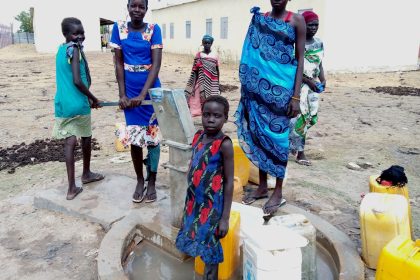Chinese big loans to Africa set for further decline in 2022
 At the November 2021 tri-annual Forum for China-Africa Cooperation (FOCAC), China pledged only $40 billion in funding over three years, a third less than the $60 billion total pledged at the 2015 and 2018 summits.
At the November 2021 tri-annual Forum for China-Africa Cooperation (FOCAC), China pledged only $40 billion in funding over three years, a third less than the $60 billion total pledged at the 2015 and 2018 summits.
In 2022, economic growth across sub-Saharan Africa (SSA) will be uneven and largely dependent on countries’ ability to provide vaccines and more effective treatments, adapt businesses, and rebalance consumer spending from goods to services.
According to IHS Markit, ‘Most critically for Africa, Mainland China – the region’s largest trading partner – is expected to resume a long-term trend of decelerated growth, slowing from 8.1% in 2021 to 5.5% in both 2022 and 2023. Consequently, Chinese appetite to extend loans – China loaned over $134 billion between 2009-2019 largely to fund major infrastructure projects across the region – has decreased’.
Uganda is still hopeful of securing financing (about $2.2 billion from the China Eximbank) for a new standard gauge railway. However, last week the Nigerian government announced it had given up waiting for a loan from the same state-owned bank to complete a major rail link and resorted to approaching the Standard Chartered Plc.
IHS Markit is a leading provider of critical information, analytics and solutions for the major industries and markets that drive economies worldwide. Reflecting on 2021, and looking forward in 2022, IHS Markit says at the November 2021 tri-annual Forum for China-Africa Cooperation (FOCAC), China pledged only $40 billion in funding over three years, a third less than the $60 billion total pledged at the 2015 and 2018 summits.
In 2021, Sub-Saharan African (SSA) economies grew by 3.5%. This rebound from the historic 2020 recession, which saw a -2.3% contraction in the region’s economies from 2019 levels, comes on the back of a recovery in global trade, more buoyant commodity prices, debt service suspension initiatives, and a loosening of COVID-19 related restrictions. Yet the rebound lags significantly behind the global rate, which is expected to increase 5.5% this year. This gap between SSA and the world is expected to remain through 2022, albeit shrunk slightly when SSA’s growth rate is expected to remain stable at 3.5% while global growth dips to 4.2%.
Recovery trajectories for the region’s economies are expected to diverge in line with their respective economic structures. Large oil-exporting economies such as Angola and Nigeria are forecast to grow only by 0.05% and 2.6% respectively, which will significantly weigh down the pace of SSA’s overall recovery.
The more diversified markets of South Africa, Kenya, and Cote d’Ivoire, however, are expected to grow by 4.7%, 4.0%, and 5.9%. But to maintain in 2022 the 2021 regional growth level of 3.5%, policymakers will have to navigate around a number of major downside risks, including inflation, fiscal constraints, and political instability.
In 2021, supply chain disruptions manifested less severely in SSA than they did globally. South Africa was an exception, however, since the country is more integrated into global trade flows than other SSA countries. Nonetheless, the broader region is affected by same the inflationary pressures the rest of the world is experiencing. For most SSA countries, central bank policy rates held steady during 2021. But interest rates may rise in 2022, particularly if, as expected, US interest rates increase, which would especially affect such countries as South Africa that are reliant on portfolio inflows as an important source of external liquidity. Moreover, a resilient US dollar combined with softer global commodity prices (except for oil) is likely to weaken SSA national currencies against the greenback in 2022.

 African Heads of state head to South Korea next week for Summit talks
African Heads of state head to South Korea next week for Summit talks
 Trading leads as main source of income for Ugandans
Trading leads as main source of income for Ugandans
 New leadership for bankers’ umbrella as total assets top $12 billion
New leadership for bankers’ umbrella as total assets top $12 billion
 Uganda-Tanzania announce date for second joint business forum
Uganda-Tanzania announce date for second joint business forum
 Unpacking results-based financing: balancing strengths with weaknesses
Unpacking results-based financing: balancing strengths with weaknesses
 Big fish in small pond Stanbic notches up $100m profit for 2023 topping previous figure by 15%
Big fish in small pond Stanbic notches up $100m profit for 2023 topping previous figure by 15%
